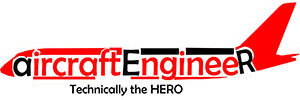10.1 Regulatory Framework
Role of International Civil Aviation Organisation;
Role of EASA;
Role of the Member States;
Relationship between Part-145, Part-66, Part-147 and Part-M;
Relationship with other Aviation Authorities.
10.2 Part-66 — Certifying Staff — Maintenance
Detailed understanding of Part-66.
10.3 Part-145 — Approved Maintenance Organisations
Detailed understanding of Part-145.
10.4 JAR-OPS — Commercial Air Transportation
Air Operators Certificates;
Operators Responsibilities;
Documents to be Carried;
Aircraft Placarding (Markings);
10.5 Aircraft Certification
(a) General —
Certification rules: such as EACS 23/25/27/29;
Type Certification;
Supplemental Type Certification;
Part-21 Design/Production Organisation Approvals.
(b) Documents
Certificate of Airworthiness;
Certificate of Registration;
Noise Certificate;
Weight Schedule;
Radio Station Licence and Approval.
10.6 Part-M
Detailed understanding of Part-M
10.7 Applicable National and International Requirements for
(if not superseded by EU requirements)
(a) Maintenance Programmes, Maintenance checks and inspections;
Master Minimum Equipment Lists, Minimum Equipment List, Dispatch Deviation Lists;
Airworthiness Directives;
Service Bulletins, manufacturers service information;
Modifications and repairs;
Maintenance documentation: maintenance manuals, structural repair manual, illustrated parts catalogue, etc.;
(b) Continuing airworthiness;
Test flights;
ETOPS, maintenance and dispatch requirements;
All Weather Operations, Category 2/3 operations and minimum equipment requirements.
